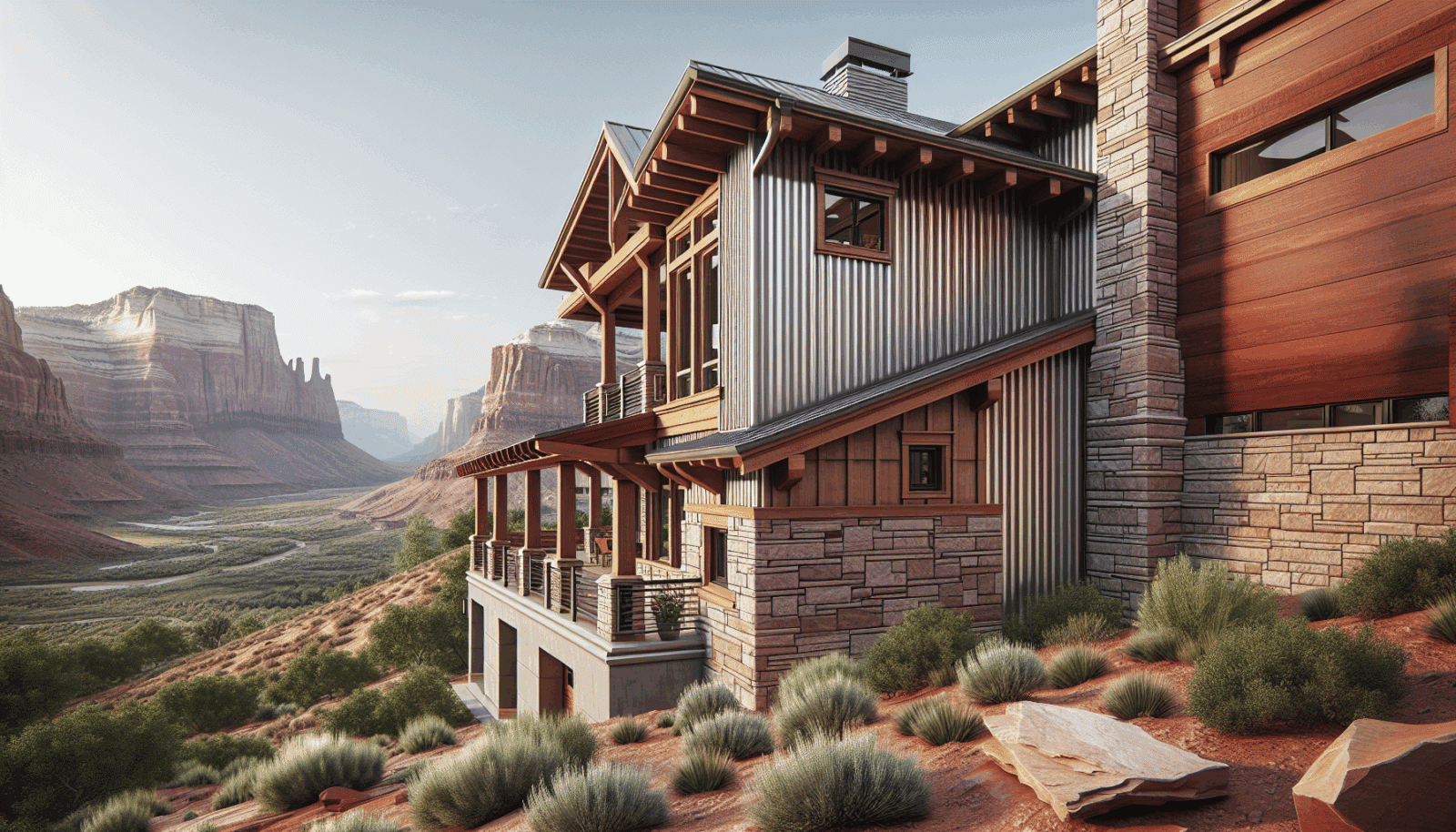Transforming your home’s exterior can be both exciting and intimidating. Whether you’re looking to enhance curb appeal or improve durability, metal siding is an excellent choice. At Utah Siding & Exteriors, we understand the challenges homeowners face when undertaking such projects. That’s why we’ve geared this step-by-step guide towards empowering you with the knowledge to navigate the process of installing metal siding, regardless of your DIY experience.
Why Choose Metal Siding?
Metal siding boasts a plethora of benefits, including its longstanding durability and minimal maintenance requirements. It can withstand the harshest weather conditions, from blistering heat to chilling cold, without losing its integrity or aesthetic appeal. Furthermore, metal siding is eco-friendly, often made from recycled materials and being fully recyclable at the end of its life cycle. For homeowners seeking a blend of style, sustainability, and strength, metal siding stands out as the supreme choice.
Moreover, with a vast array of finishes and styles available, metal siding offers unparalleled versatility. Whether you’re aiming for a sleek, modern look or a traditional façade, it can be customized to meet your specific aesthetic preferences. This makes it a favorite among homeowners looking to give their exteriors a personalized touch while benefiting from metal’s practical advantages.
Understanding the Basics
Before diving into the installation process, it’s crucial to familiarize yourself with the basics of metal siding. Typically, it comes in panels, shingles, or vertical strips, each requiring different installation techniques. Panels are the most common, providing a clean, streamlined look, while shingles can give a more textured, layer-rich appearance. Vertical strips, on the other hand, offer a unique visual appeal by creating elongated lines that can make a structure seem taller.
Tools and materials are also key components to consider. The right tools can make the installation process smoother and more efficient, while selecting high-quality materials ensures that your siding will stand the test of time. It’s essential to prepare a list and gather everything you need ahead of time to avoid any mid-project disruptions.
Preparation Is Key
Like most home improvement projects, preparation plays a significant role in the success of installing metal siding. Start by carefully measuring the area you plan to cover to determine how much siding you’ll need. It’s always wise to order a little extra to account for any mistakes or adjustments.
Next, ensure the wall surfaces are clean, dry, and smooth. Any protrusions or irregularities can affect the installation, leading to uneven or insecure siding. If you’re installing over an existing siding material, check for any signs of damage or decay that need addressing before proceeding. This foundational work is pivotal to achieving professional-looking results that last.
Gathering Your Tools
Having the right tools on hand is critical for a successful metal Siding Installation. Basic equipment includes a tape measure, level, chalk line, circular saw with a metal-cutting blade, and snips for trimming the siding. Protective gear, such as gloves and safety glasses, is also essential to safeguard against sharp edges and metal shavings.
Depending on the complexity of your project, additional tools such as a metal brake (for creating clean bends) or a siding gauge (to ensure consistent alignment) might be necessary. Assess the scope of your project thoroughly to ensure you’re fully equipped before beginning.
Preparing the Surface
A smooth, stable surface is crucial for the siding to adhere properly and last for years. Remove any existing cladding, unless installing over it is feasible and advisable for your particular project. Repair any damage to the underlying structure to prevent future issues, such as water infiltration or warping.
Apply a weather-resistant barrier over the bare walls to protect against moisture. This step is crucial for preventing mold growth and structural damage. Ensure the barrier overlaps at seams for maximum protection and tape all seams as per the manufacturer’s instructions.
The Installation Process
Beginning with the starter strip, ensure it’s level before securing it at the base of the wall. This serves as the guiding line and support for the bottom row of siding panels, and getting it perfectly level is vital.
When installing the panels, always start from the bottom and work your way up, ensuring each piece interlocks securely with the one below. Use screws or nails suitable for metal siding, spaced according to the manufacturer’s recommendations. It’s important to not over-tighten fasteners, as metal needs room to expand and contract with temperature changes.
Trim and Flashing
Trim and flashing are not merely decorative; they’re essential components for weatherproofing and finishing the edges of your metal siding. Window, door, and corner trims provide a neat finish and help seal off these vulnerable areas from water ingress.
Correctly installed flashing diverts water away from seams and junctions, requiring precision and attention to detail. Ensure all trim and flashing pieces are cut to exact measurements and angles for a tight fit and complete coverage.
Finishing Touches
Once the panels, trim, and flashing are securely installed, it’s time for the finishing touches. Sealant should be applied to all joints, edges, and penetrations to create a watertight seal, preventing moisture from penetrating behind the siding.
Review the entire installation from different angles and distances to catch any uneven lines or irregularities. Minor adjustments can often be made even after the main installation is complete, ensuring the aesthetic and functional integrity of your metal siding.
Tips for a Successful Installation
- Measure Twice, Cut Once: Double-check your measurements before cutting any materials to minimize waste and ensure accuracy.
- Allow for Expansion: Metal expands and contracts with temperature changes. Always leave a small gap between panels and trim to accommodate this movement.
- Use the Right Tools: Invest in or rent the specific tools recommended for metal siding installation. The right tool can make a significant difference in the ease and quality of the installation.
- Follow Manufacturer Instructions: Siding products can vary, so it’s crucial to adhere to the guidelines provided by the manufacturer regarding installation, fasteners, and maintenance.
- Consider Professional Help: While many homeowners are capable of installing metal siding, the complexity or scale of some projects may require professional expertise. Don’t hesitate to reach out to us for assistance or advice.
Conclusion
We hope this guide empowers you to approach your metal siding project with confidence. Remember, the key to a successful installation lies in thorough preparation, precise execution, and attention to detail. If you find yourself in need of assistance or simply prefer to entrust your project to experienced professionals, we’re here to help. Reach out to Utah Siding & Exteriors at 801-509-9241 or Request a Free Quote to ensure your home improvement journey is as smooth and rewarding as possible.




